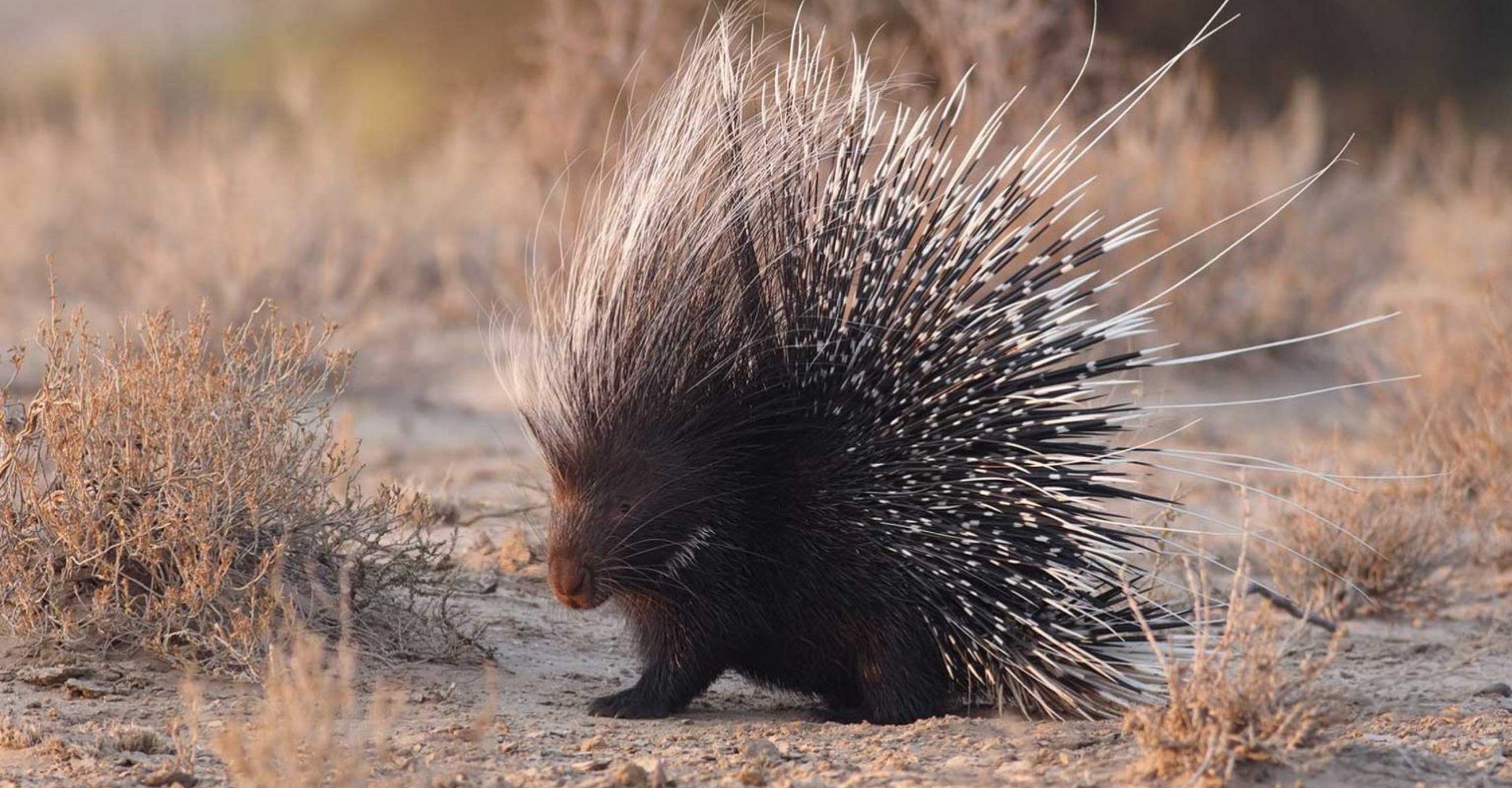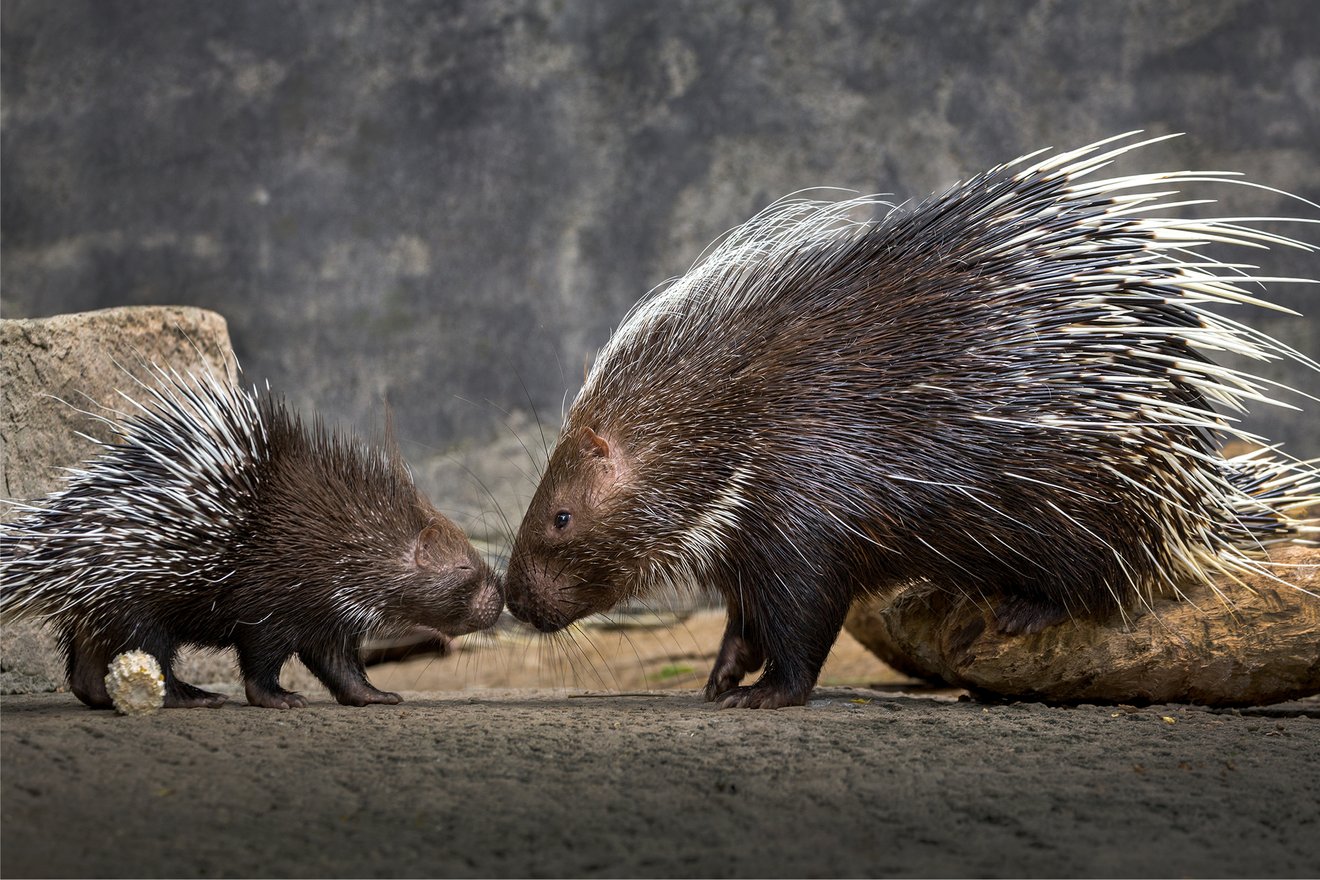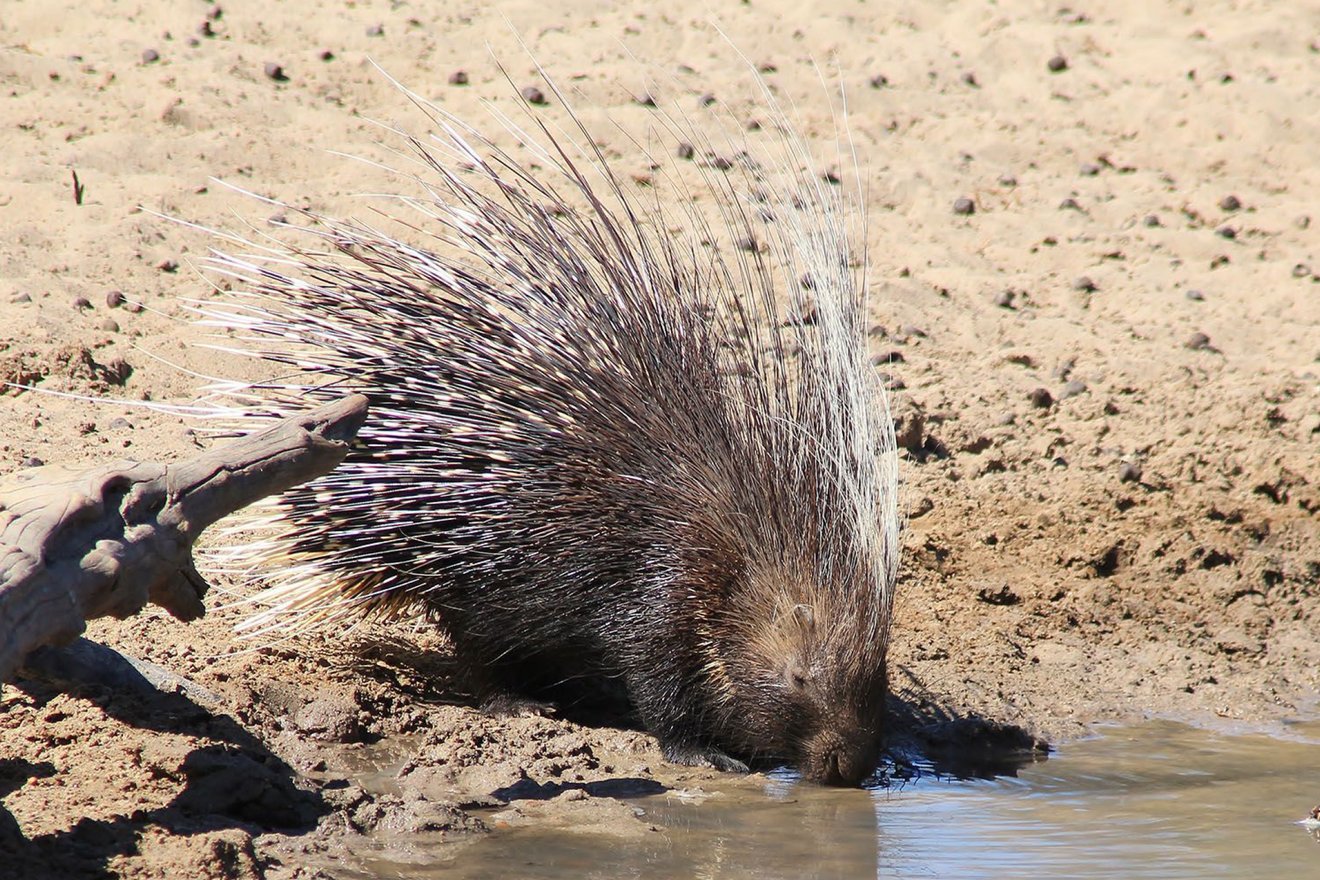The porcupines from Africa are savannah dwellers, which, despite certain similarities, are not related to hedgehogs. They are among the largest rodents in the world and primarily feed on tubers, roots, fruits, and tree bark. Near human settlements, they also forage through garbage at night for edible vegetable scraps. It is rare to encounter them alone on their nocturnal forays. Porcupines form monogamous pairs that are often seen together, frequently with their offspring.
Nocturnal rodent
LOYAL PARTNERS IN CRIME
Porcupines prefer warm climates and are found not only in southern Africa but also in Southeast Asia and southern Europe (Italy, Sicily). Measuring up to one meter in length and weighing over twenty kilograms, they are the largest rodents in the world. Porcupines are nocturnal, resting during the day in their nests, which they hide among large rocks or in abandoned burrows of other animals. They rarely dig their own burrows and tunnels.
Once a pair has bonded, they remain faithful to each other. Together with their offspring, pairs form mixed-gender family groups of up to 14 animals. On cold days, they huddle closely together to keep warm. They forage for food communally and defend themselves against predators together. They communicate through body language, sounds, and by marking their territories with scent from their perianal glands and urine. The areas where young porcupines reside are aggressively defended against intruders.
Males and females are hardly distinguishable from each other. Their fur is brown-black. Their quills are distinctly patterned in contrasting brown-black and white. Different types of hairs and quills can be distinguished: soft woolly hairs, stiffer hairs, flat bristles, thick, very elastic, long bristles (feelers, which can be up to 50 cm long), and rigid, long, round spines. The latter have small barbs at their tips and are used for defense. The quills lie in a subcutaneous muscle layer and can be erected as needed. The shorter quills on the tail form a tuft, which the animals rattle in case of danger. When confronting a threat, they reinforce their warning by raising their quills, making "threatening" grunts, and stamping their feet. If the attack cannot be repelled in this way, they switch to combat mode: they turn their spiked bodies towards the enemy, move sideways or backwards towards the attacker, and try to impale them with their barbed quills. If successful, the quills embed into the enemy and remain stuck.
Cheetahs, leopards, hyenas, and jackals can be effectively deterred by these displays and attacks. Humans, however, pose a different challenge. Porcupines are hunted as a sought-after source of meat. The species found in KAMBAKU is legally hunted. Hunting some related brush and tufted porcupines is, however, endangering their populations and is illegal.
Quills shed in combat are considered lucky charms by those who find them. However, they are not permitted to be taken out of the country as "organic material." In traditional cultures, the various quills are used as tools, especially for crafts or medical procedures (e.g., to open wounds). They are not only suitable as needles but also for unravelling intricate braided hairstyles.
Rock paintings in Zimbabwe indicate that porcupines have been valued and utilized as cultural companions for over 7,000 years.




